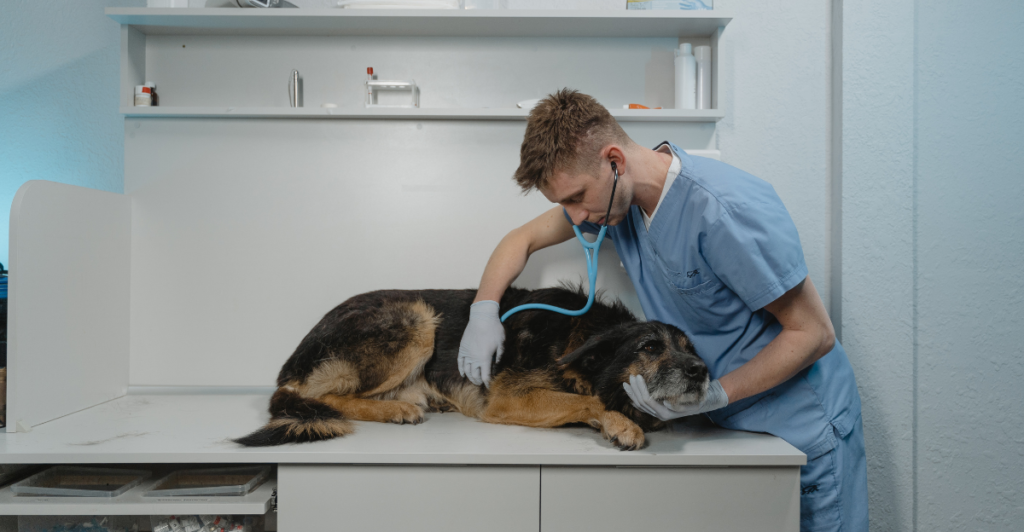
In the 1970s, dogs often lived longer than they do today, raising questions about what has changed. Many dogs experienced simpler lifestyles and diets during this time, different from the processed options commonly used now. Veterinary care and daily living routines were also distinct. Exploring these differences sheds light on factors contributing to longer lifespans for our four-legged friends during this era.
Diet Simplicity and Home-Cooked Meals

Many pet owners in the 1970s fed their dogs home-cooked meals or table scraps instead of processed commercial dog food. These diets were free from artificial preservatives and fillers, which are common today. While not perfectly balanced, these simpler meals often contained fresh ingredients that may have contributed to better overall health and longevity for dogs.
Less Exposure to Processed Foods

Commercial dog food was available but less widespread in the 1970s. When used, it typically contained fewer additives compared to today’s ultra-processed varieties. This reduced exposure to chemicals, synthetic preservatives, and artificial flavors may have contributed to longer canine lifespans by limiting dietary stressors.
Active Lifestyles and More Outdoor Time

Dogs in the 1970s generally had more outdoor freedom, often roaming neighborhoods or farms. This active lifestyle kept dogs physically fit, mentally stimulated, and socially engaged. Exercise and exploration may have helped prevent obesity and other health issues, contributing to their overall well-being.
Fewer Overweight Dogs

Obesity in pets has become a more prevalent issue in modern times, but it was less common in the 1970s. Combining home-cooked meals, less processed food, and active lifestyles helped dogs maintain healthier body weights, reducing the risk of diabetes, heart disease, and joint problems.
Natural Immunity and Fewer Chemicals

In the 1970s, dogs were less exposed to environmental chemicals, including pesticides and household cleaners. This lower exposure may have helped support healthier immune systems. Additionally, dogs had greater exposure to natural environments, which may have bolstered their ability to fight infections and diseases over time.
Limited Over-Vaccination Trends

While vaccinations were available in the 1970s, over-vaccination was less prevalent. Veterinarians focused on essential immunizations rather than yearly boosters for every ailment. This approach reduces strain on the immune system while protecting against significant diseases.
Less Stressful Lifestyles

Dogs in the 1970s experienced less environmental stress than today. Quieter neighborhoods, fewer crowded urban areas, and more predictable routines contributed to less anxiety. This relaxed lifestyle likely promoted longer lifespans by supporting mental and physical health.
Fewer Chronic Diseases Diagnosed

Advances in veterinary medicine have improved the diagnosis of chronic illnesses, but this may also give the impression that dogs are unhealthier now. In the 1970s, many chronic conditions went undiagnosed. However, those times’ active and simple lifestyles may have naturally reduced the incidence of some of these diseases.
Selective Breeding Practices

Breeding practices in the 1970s often focused less on extreme traits and more on functional qualities. This reduced the prevalence of genetic disorders arising from inbreeding or breeding for specific aesthetics, and dogs may have enjoyed better genetic health.
Environmental Factors at Play

The 1970s were marked by less urbanization and pollution in many areas, providing cleaner air and water for dogs. This healthier environment may have reduced stress on their bodies, leading to longer lives. Access to natural spaces allowed dogs to thrive in more limited ways today.
The Role of Veterinary Advances

While veterinary care was less advanced in the 1970s, it was also less invasive. Natural recoveries were more common, with fewer surgeries or experimental treatments. This approach avoided some risks associated with modern medical interventions, contributing to longevity.
Takeaways for Today’s Pet Owners

Though we can’t turn back time, modern pet owners can adopt some 1970s practices to help their dogs live longer. Providing fresh, balanced diets, encouraging active lifestyles, and minimizing unnecessary stressors can make a significant difference. By learning from the past, we can work toward healthier futures for our furry companions.
Stay connected with us for more stories like this! Follow us to get the latest updates or hit the Follow button at the top of this article, and let us know what you think by leaving your feedback below. We’d love to hear from you!







